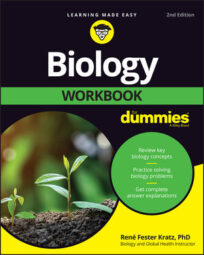The two most extreme outcomes of natural selection for species are extinction and speciation. Natural selection may cause populations of species to change, but exactly how they change depends on the specific selective pressures at a given time.
Individuals within a population may evolve to be more similar to or more different from one another depending on the specific circumstances and selection pressures.
Species that can’t adapt to changing environmental conditions may become extinct, or disappear from Earth. On the other extreme, new species may arise when a population accumulates so many changes that it can no longer mate with related organisms. Biologists call the creation of new species speciation.
Four types of natural selection may act to cause changes in populations:
Stabilizing selection: This type eliminates extreme or unusual traits. The best adapted ndividuals are those with the most common traits, which maintains the frequency of common traits in the population. Over time, nature selects against extreme variations of the trait.
Directional selection: Traits at one end of a spectrum of traits are selected for, whereas traits at the other end of the spectrum are selected against. Over generations, the selected traits become common and the other traits become rarer and rarer until they’re eventually phased out.
Disruptive selection: The environment favors extreme or unusual traits and selects against the common traits. Over time the traits at opposite ends of the trait spectrum dominate.
Sexual selection: Females increase the fitness of their offspring by choosing males with superior fitness; females are therefore concerned with quality. Males contribute most to a species’ fitness by maximizing the quantity of offspring they produce.
Competition among males for opportunities to mate may exist in the form of strength contests, leading to the evolution of traits that give a male an advantage in a strength contest. Because females choose their mates, males may also develop traits to attract females, such as certain mating behaviors or bright coloring.
Biological evolution happens to populations, not individuals. Individuals live or die and reproduce or don’t reproduce depending on their circumstances. Individuals themselves can’t evolve in response to a selection pressure, but over time, a species can evolve.
Imagine a giraffe whose neck isn’t quite long enough to reach the tastiest leaves at the top of the tree. That individual giraffe can’t suddenly grow its neck longer to reach the leaves. However, if another giraffe in the herd has a longer neck, gets more leaves, grows better, and makes more calves that inherit his long neck, then future generations of giraffes in that area may have longer necks.
For questions 1–4, use the terms that follow to identify the type of natural selection that may have produced each characteristic.
a. Stabilizing selection
b. Directional selection
c. Disruptive selection
d. Sexual selection
Female dung beetles prefer to mate with larger male dung beetles.
Frequent lawn mowing leads to faster-growing weeds.
Some humans are very tall, and some humans are very short, but most humans are somewhere in between.
A few finches landed on the Galapagos Islands, which had no birds living there. From those original finches, many different species of finches evolved, each one having a different type of beak and specializing in a different type of food.
The following are the answers to the practice questions.
The answer is d. Sexual selection.
The answer is b. Directional selection.
The answer is a. Stabilizing selection.
The answer is c. Disruptive selection.

